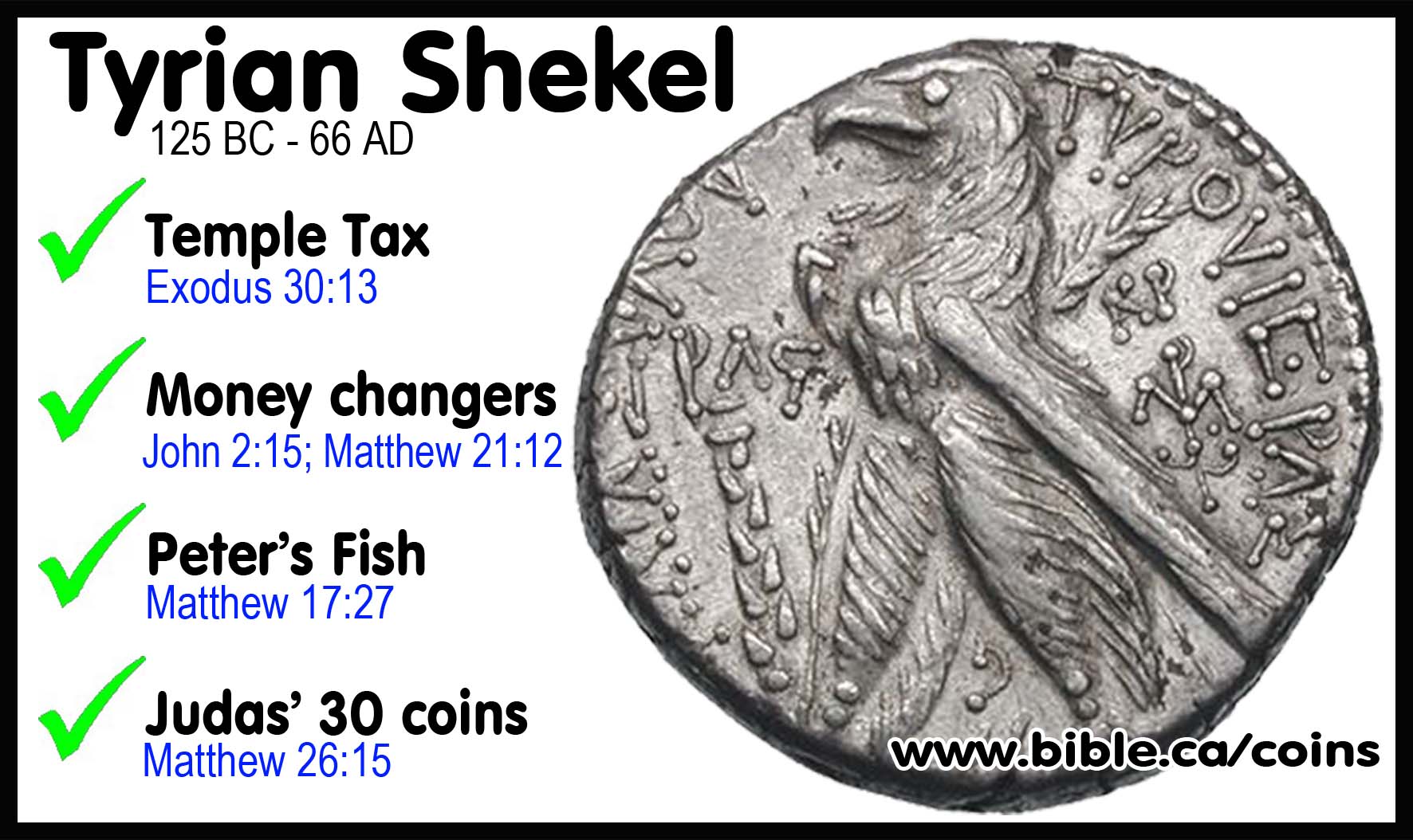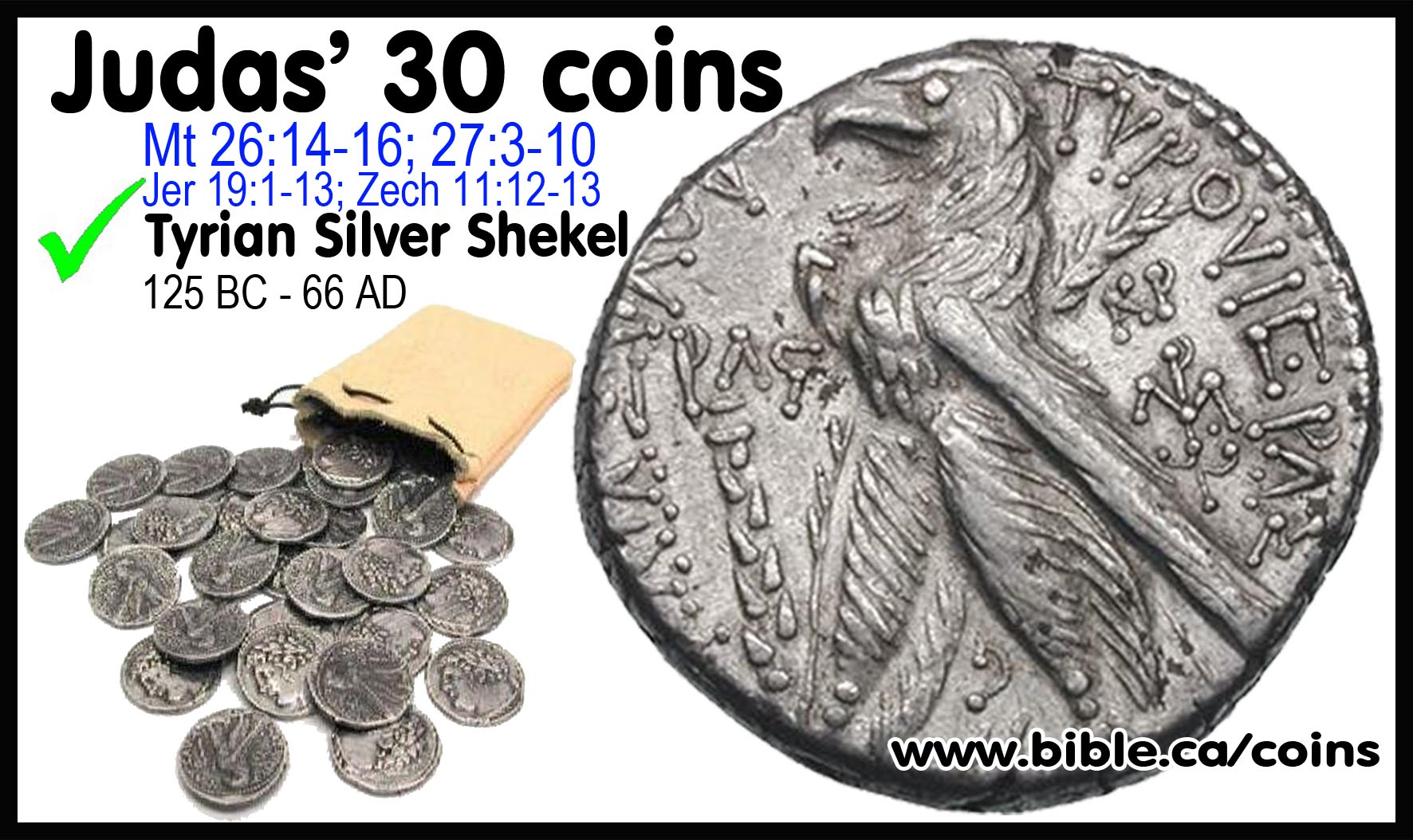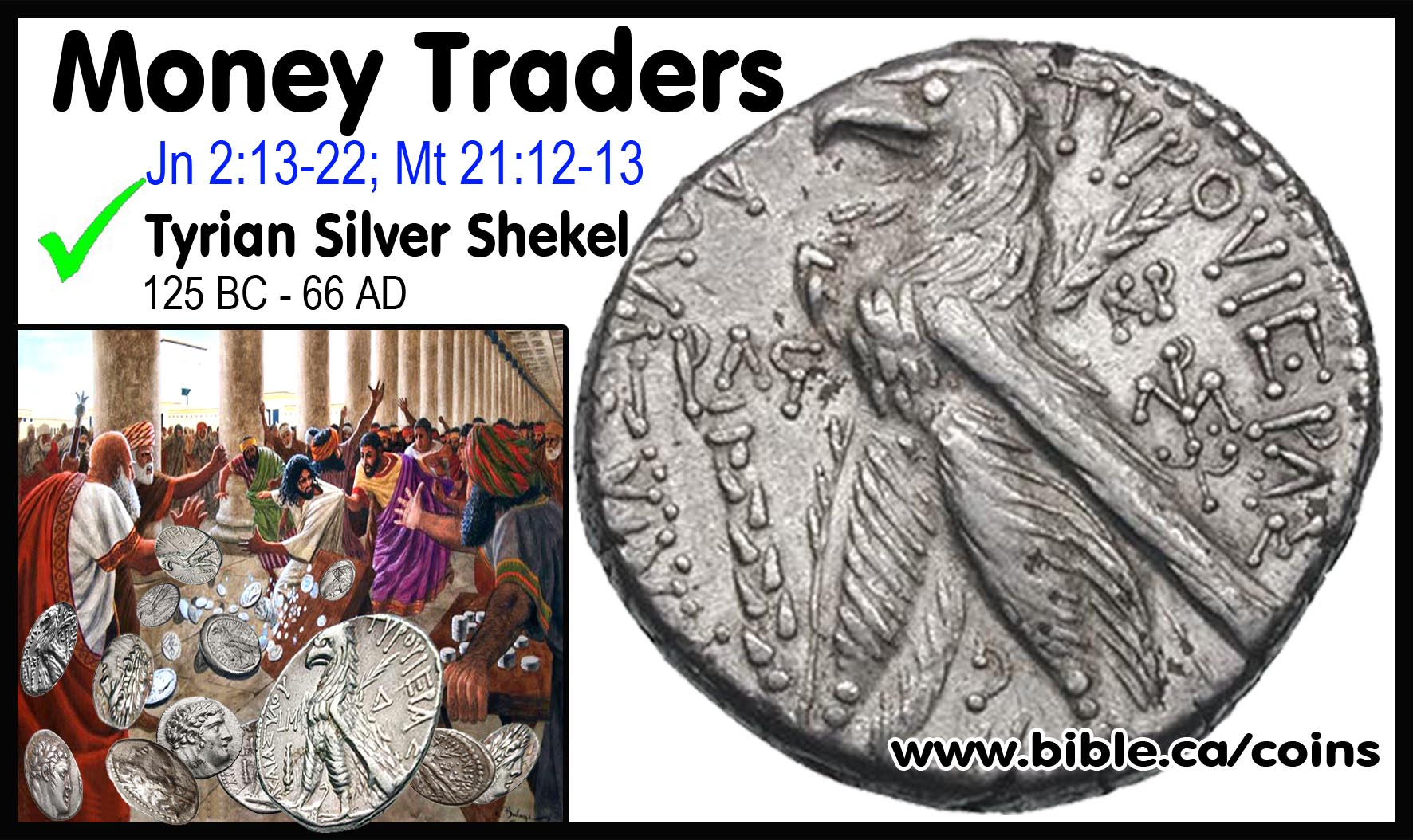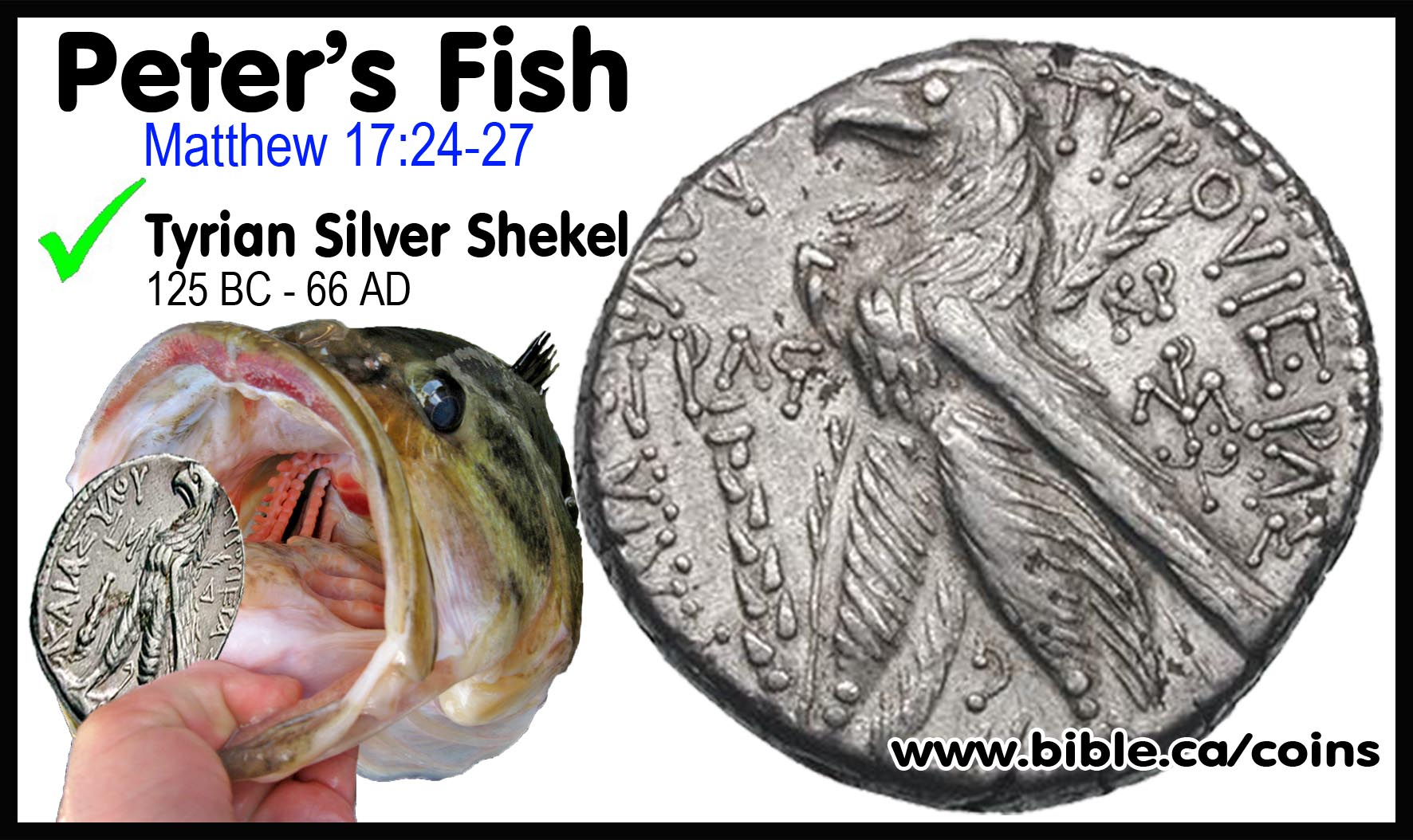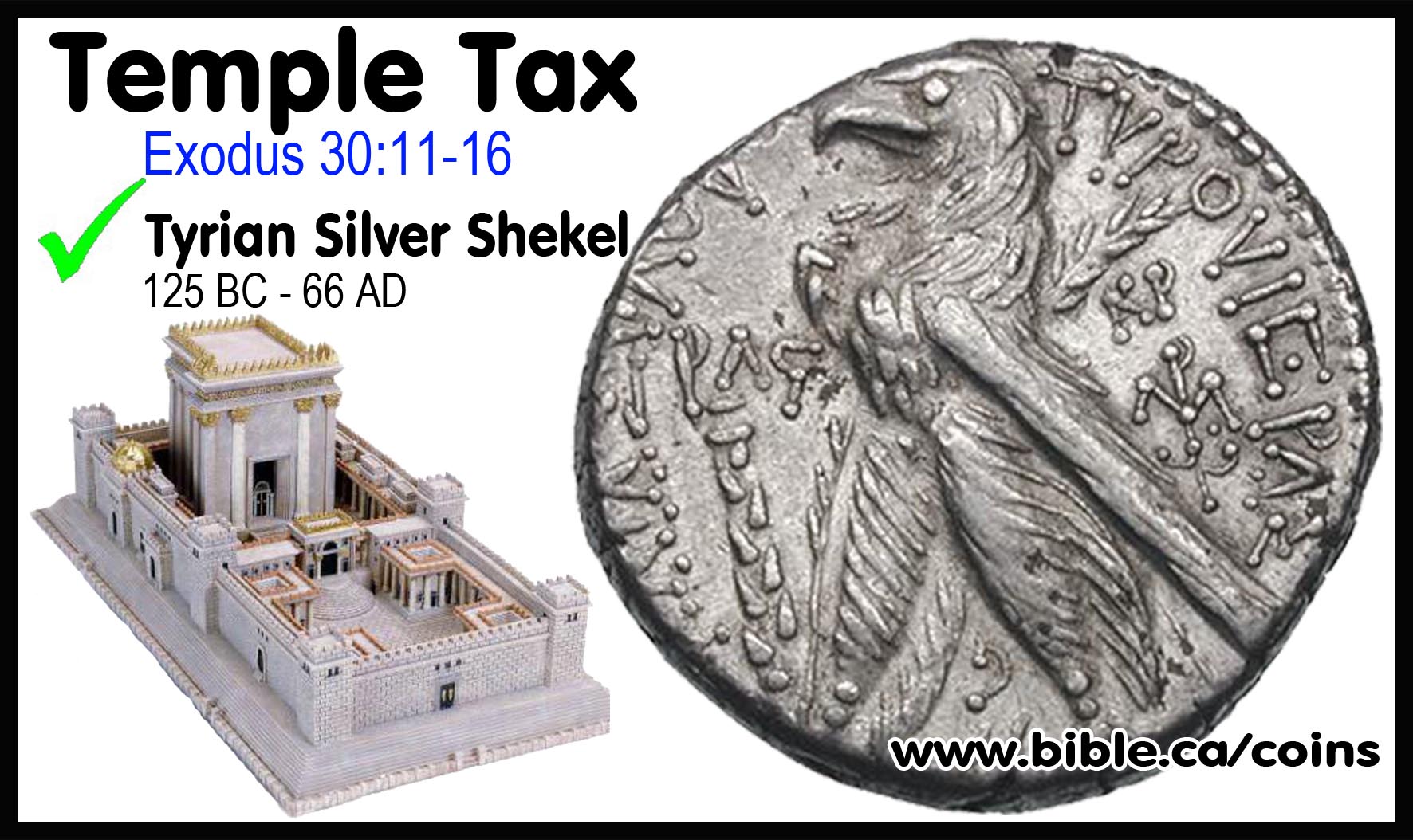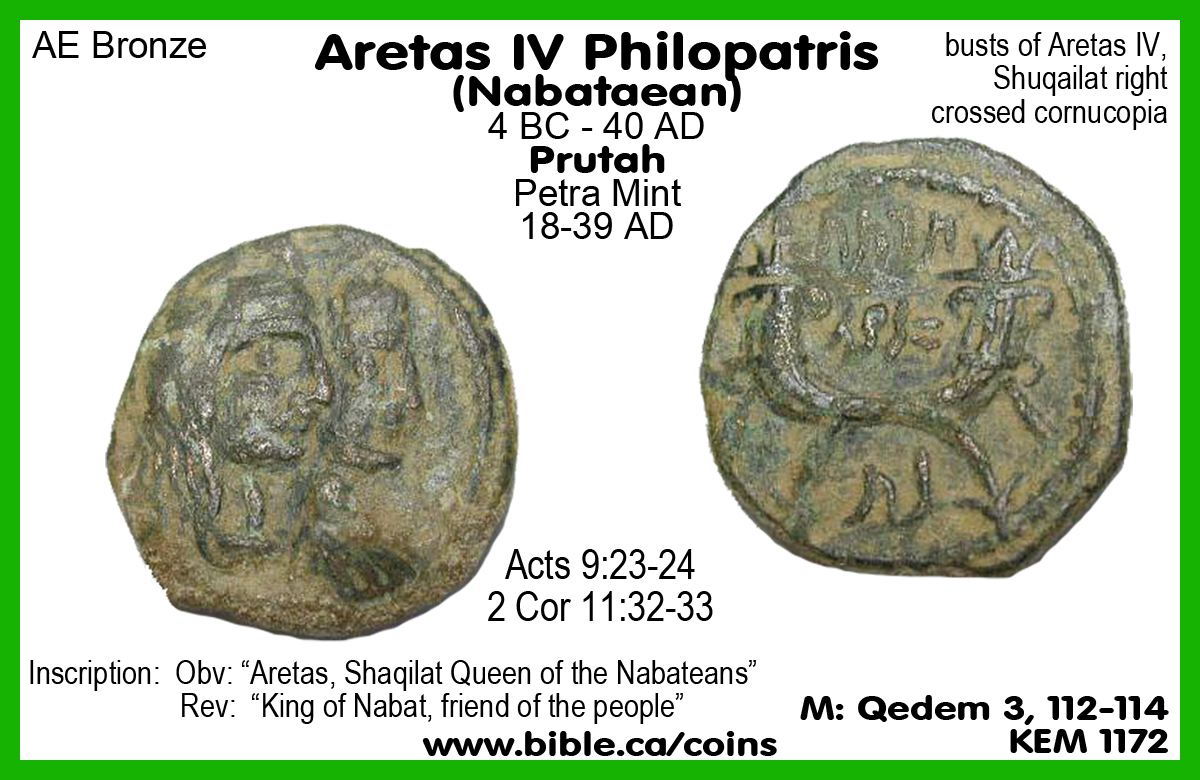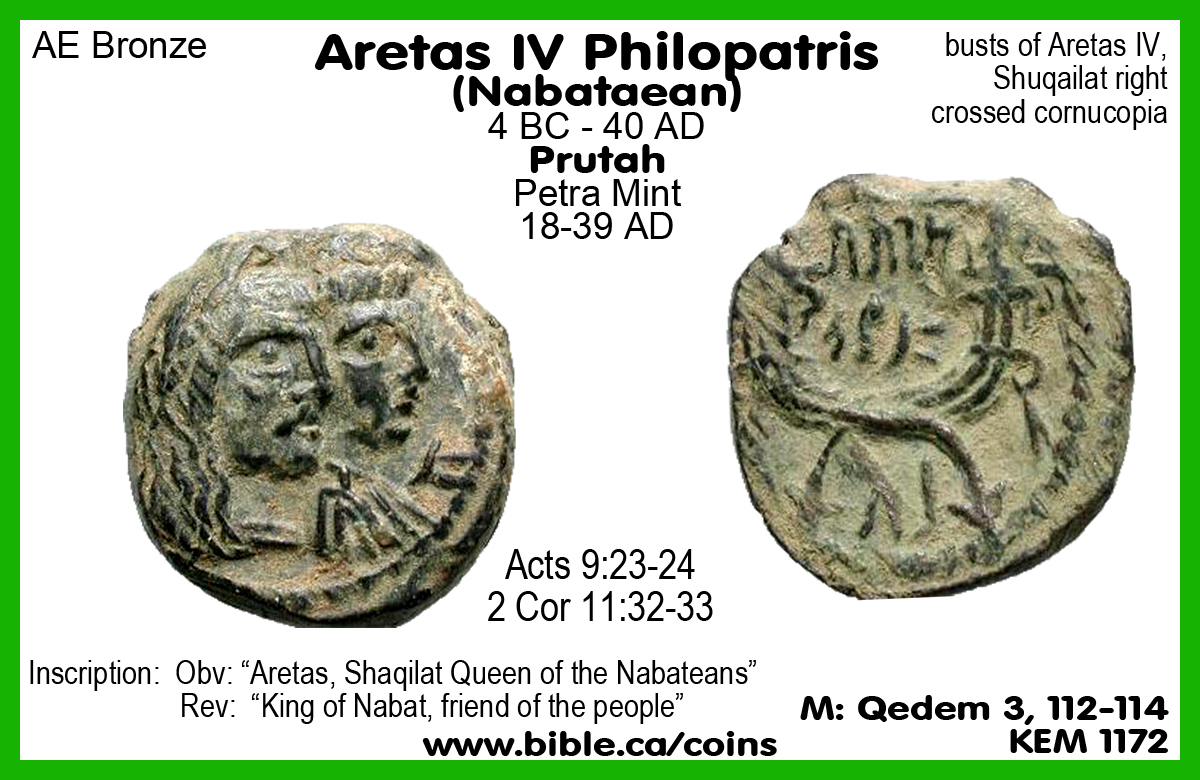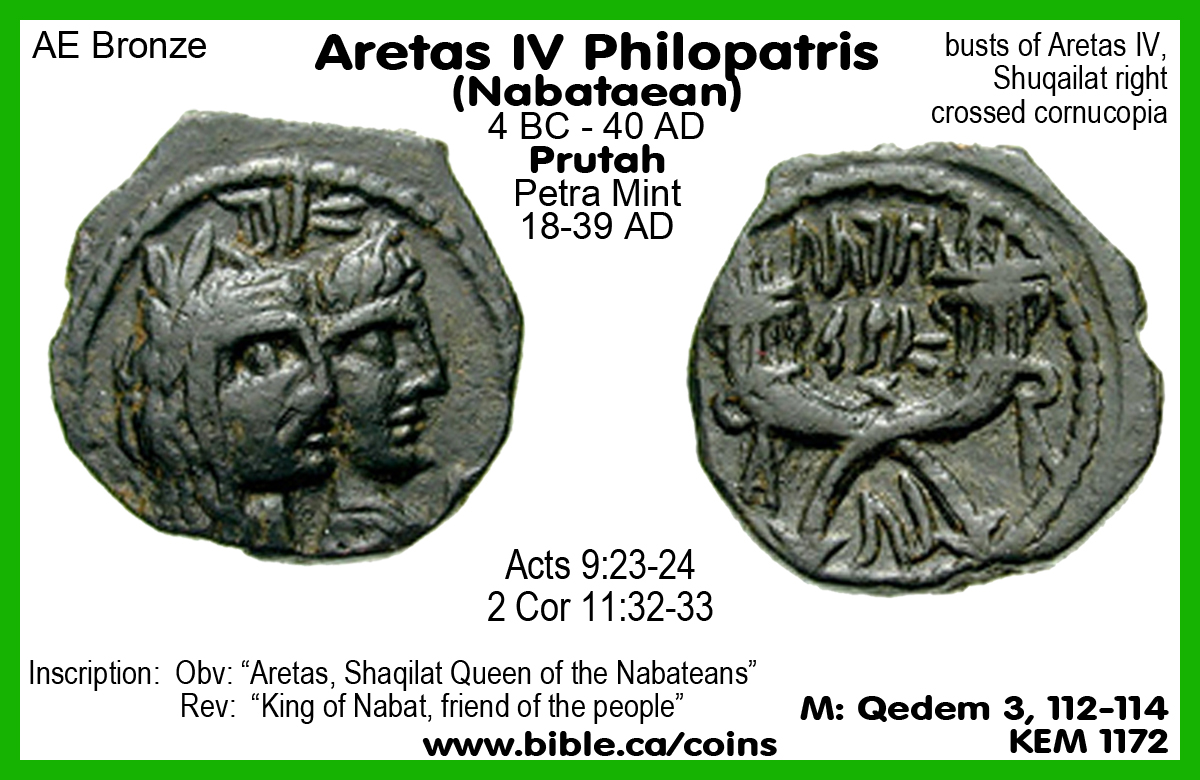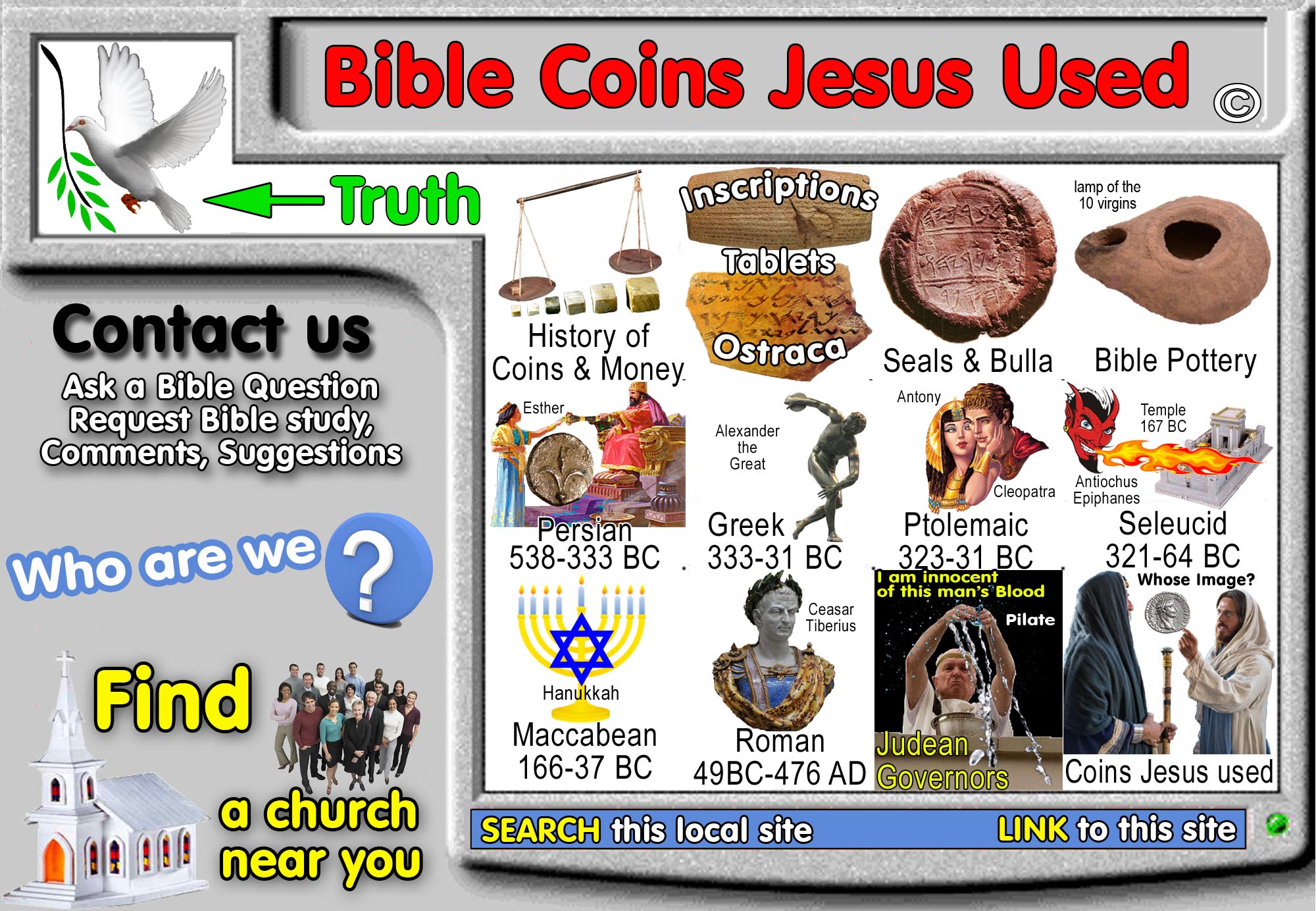New Testament coins Jesus used every day
Introduction:
- There are seven coins named in the New Testament from 7 different Greek words.
- There are also many coins named in the Old Testament which we will document in time, the most famous being the gold "daric" produced by Darius the Mede who is named in Daniel: "That same night Belshazzar the Chaldean king was slain. So Darius the Mede received the kingdom at about the age of sixty-two." (Daniel 5:30-31).
- Mina and talent are money terms used in the New Testament but they refer to weights of silver rather than coins.
Seven Coins Named in the New Testament
- LEPTON: "WIDOW'S MITE" (Mark 12:42, Luke
12:59; 21:2)
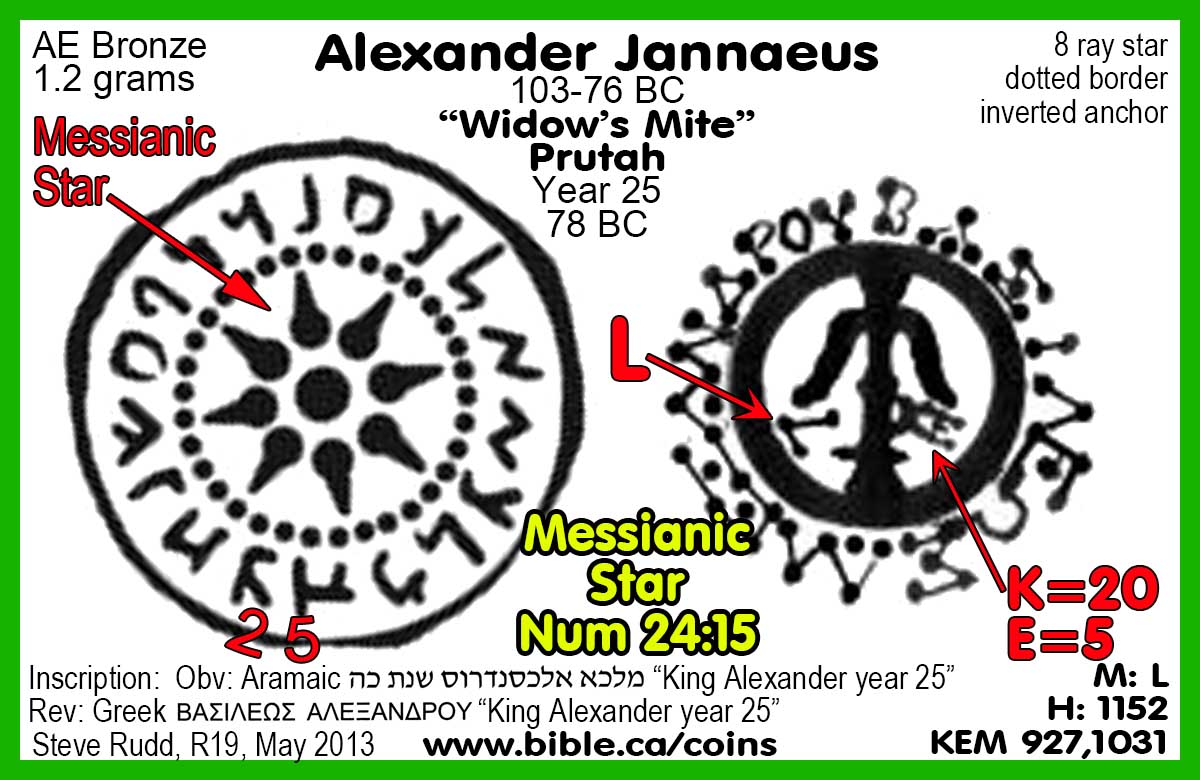
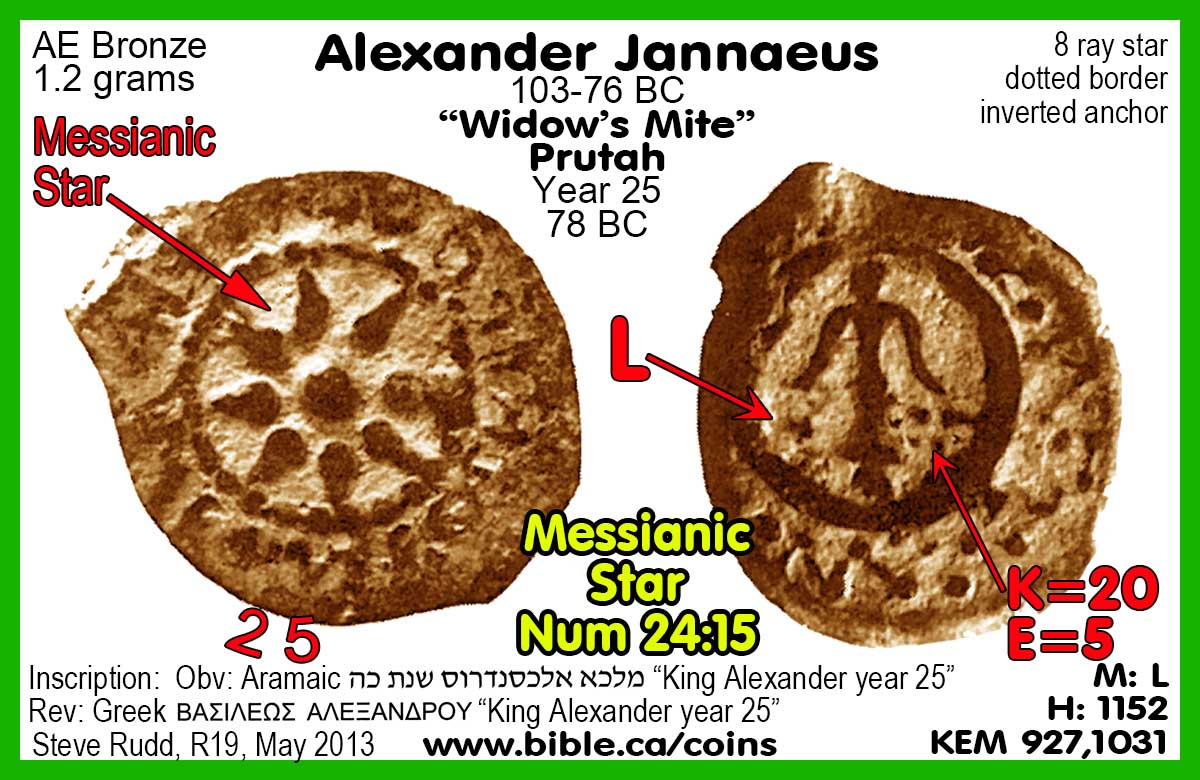
- DRACHMA Mt 15:8
- "The drachma is an unusual coin of Christ’s time. The Roman denarius has long replaced the Seleucid/Greek silver coins and was their equivalent. It has been thought that perhaps the coin (mentioned only in Luke 15:8) was a Cappadocian drachma, bearing Tiberius’ bust, since these coins have been found in Palestine and were contemporary with Jesus’ story of the woman and her lost coin. I feel however, that the coin was Seleucid. Jesus’ reference seems to be to a bride’s dowry portion retained from a wedding. Such coins would be passed from mother to daughter and would explain both the presence of a coin no longer in current circulation and the woman’s desperation." (Coins Of The Bible, Stan Hudson, Bible and Spade, Vol. 9, No. 2, P 64, 1980 AD)
- DIDRACHMA (Matthew 17:24):
- The didrachma and tetradrachma (actually stater) are references to silver coins from the city of Tyre, used in the business of the Temple. The staters were equal to shekels, and because the Jews were forbidden to issue their own silver coins, they were forced to use coins from this merchant city.
- Ironically, the coins bore the image of Israel’s old nemesis, Baal. Money-changers were on hand to render service, changing foreign currency into these Tyrian coins for a percentage. Judas was paid with thirty staters.
- TYRE SHEKEL: STATER OR TETRADRACHMA: full outline
- The shekel of Tyre minted in Jerusalem: full outline
- It was Herod's only silver coin which was started production in 18 BC in the Jerusalem mint. Originally it was produced in the Tyre mint but when Herod completed the temple in 18 BC (18 months to build) he needed direct control over the most important coin of his new temple: the official Temple Tax shekel. So Herod the Great transferred the production from Tyre to Jerusalem.
- This is by far the most important coin in the New Testament because it is part of four different Bible stories:
- QUADRANS: Mt 5:25; Mark 12:42
- The quadrans was an Imperial Roman coin meant to circulate throughout the Empire. The size of a Canadian or US cent, the quadrans bore the religious symbols. The King James Version renders this coins as a “farthing”, which is an old English coin.
- ASSARIUS: Mark 10:29; Luke 12:6
- The assarius was an Imperial Roman coin meant to circulate throughout the Empire. The assarius was larger than the quadran and usually pictured the emperor. The King James Version renders both this coin as a “farthing”, which is an old English coin.
- DENARIUS: Matthew 18:28, 20:2, 9-10
- Mina and talent are money terms used in the New Testament but they refer to weights of silver rather than coins.
- The denarius is the most referenced coin in the New
Testament: sixteen times. The denarius was a silver coin the size of a
U.S. dime and was worth ten assarii. This is the coin rendered “pence”
and “penny” in the King James Version. Civil taxes to Rome had to be paid
in this coin. Pious Jews questioned the morality of such an act.
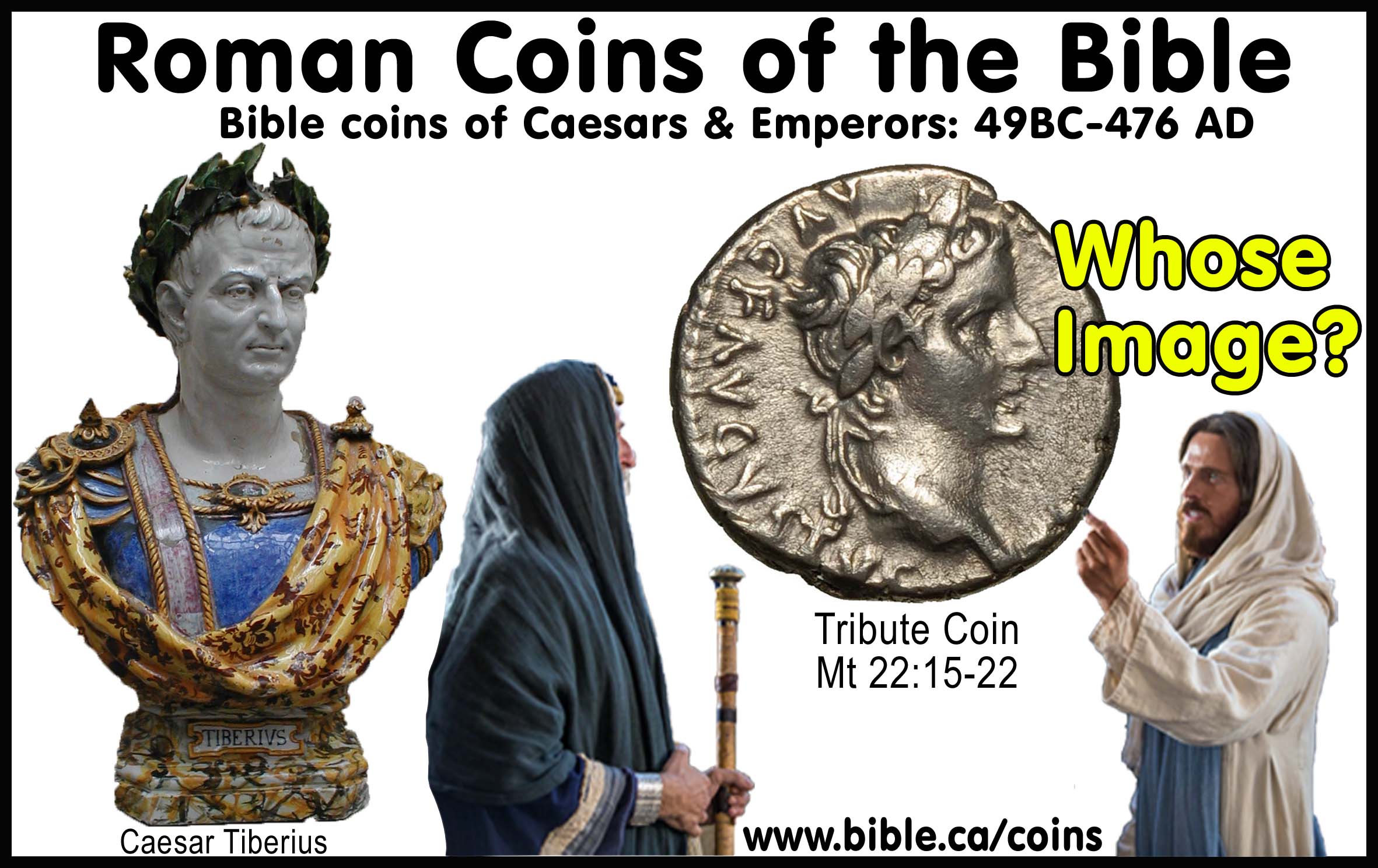
Aretas IV (Nabataean) 4 BC - 40 AD
- Bible verses:
- "In Damascus the ethnarch under Aretas the king was guarding the city of the Damascenes in order to seize me, and I was let down in a basket through a window in the wall, and so escaped his hands." (2 Corinthians 11:32–33)
- "When many days had elapsed, the Jews plotted together to do away with him, but their plot became known to Saul. They were also watching the gates day and night so that they might put him to death;" (Acts 9:23–24)
- Coins of Nabataean (Petra) king Aretas IV with Queen Shuqailat: Prutah 18-39 AD
- Ya'akov Meshorer, Nabataean Coins, QEDEM 3, Hebrew University, Jerusalem (1975) 113 type: struck circa 39/40 AD
Conclusion:
- We have featured the coins of the New Testament that Jesus and the apostles used.
- For those who question the authenticity of the New Testament, these coins confirm the Bible as 100% accurate history inspired by God.
- Read the Bible and obey the God of heaven who gave it!
- On Pentecost 33 AD, God set up his divine Kingdom which we know today as the Church of Christ which will never come to an end:
- "For this you know with certainty, that no immoral or impure person or covetous man, who is an idolater, has an inheritance in the kingdom of Christ and God." (Ephesians 5:5)
- "For He rescued us from the domain of darkness, and transferred us to the kingdom of His beloved Son, in whom we have redemption, the forgiveness of sins." (Colossians 1:13–14)
- Why not attend a local church that follows the pure Bible Blueprint in your own home town!
- Click here to find a local church in your home town
By Steve Rudd: Contact the author for comments, input or corrections.
